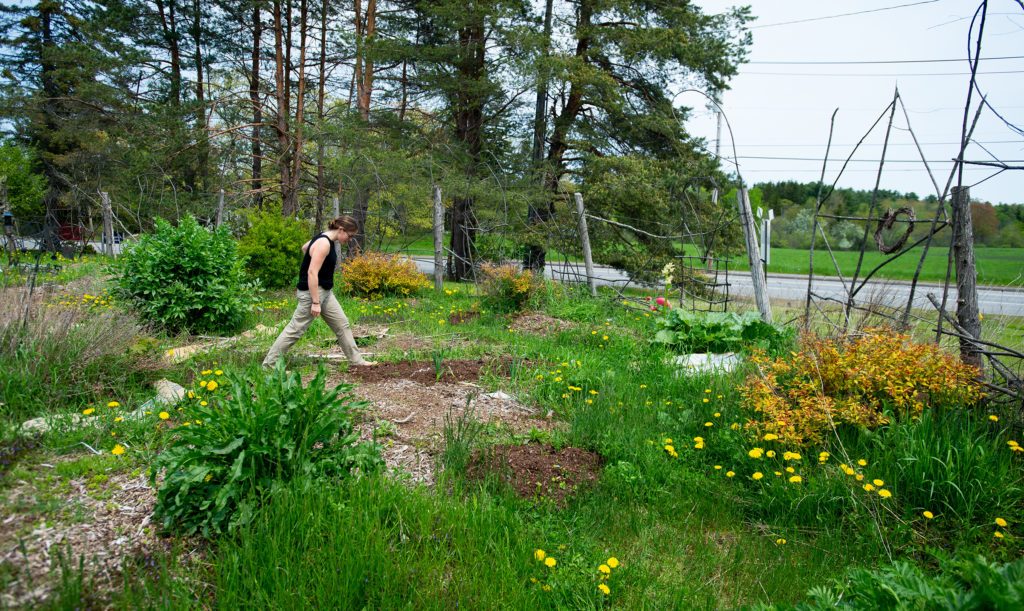How to get started with permaculture
If you find the idea of combining the best of vegetable gardening with natural landscaping, you’re probably ready to turn your growing space into a permaculture garden. Here’s how to get started with permaculture.
Permaculture is a design system that works with the natural patterns in nature as you build up a garden that’s self-sustaining and less dependent on external additives like chemical fertilizers or outside water supplies.

“Permaculture is the tool and process we use that begins with looking at the wild ecosystems as a template,” said Jesse Watson, principal designer at Midcoast Permaculture in Maine. “In practice it’s a way of making decisions on what elements we put in landscaping or farming or forestry that creates an entire ecosystem that is also agriculturally productive”
Start by observing
Anyone can learn the system and how to get started in permaculture, according to Dr. Joline Blais, associate professor of new media at the University of Maine and adviser for the campus’ Terrell House Permaculture and Living Center. It all starts with looking around.
“Apply the principles of observation,” Blais said. “Look at what is growing where you want to put your [permaculture] garden and use that to plan it.”
In fact, for the first year of your permaculture gardening, Blais recommends not planting anything.
“For that first year you want to keep a written diary with photographs,” she said. “Observe [the garden space] and track wind direction, insects, birdlife, wildlife, amount of sun and shade [and] eventually you will end up with an understanding of the natural system you are working in.”
Design with nature as your model
Once you know everything there is to know about your potential garden site, then it’s time to design your permaculture garden in preparation for planting.
You’re going to base those plans on your year’s worth of observations. Some permaculture gardeners create overlaid plans that account for everything they observed. And because permaculture gardening is working within, not against the natural world, there is always the option of adapting and changing any part of your plan that is not working out.
“Permaculture gardening is not a passive activity of tossing in seeds,” Blais said. “You are interacting with the land in a very activist gardening sort of way.”
Water is key
One of the first things you are going to notice with your observation-based plan is what areas of your property get a lot of water and what areas get little to none. This is very important information when learning how to get started with permaculture as water is key to a healthy garden.
If an area seems to hold too much water or is always soggy, you can create a swale — a shallow ditch that mirrors the contours of your garden — that can help naturally capture and hold rainwater to water plants.
You can also capture and “harvest” water with a rainwater catchment system to irrigate dryer areas of your garden.
The no-till method
Traditional methods of preparing a garden spot often do more harm than good to the soil over the long term, according to Watson. Learning how to get started with permaculture means learning a new way of planting.
“Tillage-based agriculture is extremely violent to the ecosystem,” Watson said. “Heavy machinery driving over the soil compacts that soil [and] constant turning over of the soil can lead to erosion and a loss of important nutrients.”
In a permaculture garden you want to prepare your planting areas using the “no-till” method.
Tilling — or plowing — up a plot of land requires several treatments either with machinery or by hand to turn over the soil to get rid of weeds and then plant the seeds.
Instead of plowing or tilling, you can prepare your garden spot by simply removing the top layer of weeds and other natural growth only in the spot you want to plant. Think outside the box — you don’t need nice, straight rows. You can plant seeds in small, scattered spots and mulch around them.

If you want to plant in a larger, single space, plan ahead. In the fall cover the future garden site with mulch to prevent weeds from sprouting up in the spring. Not only does this create a space for your garden, mulch can provide nutrients to the soil.
You can mulch using straw, cardboard, newspaper, fallen leaves or manure.
Time to plant
When you are ready to put seeds or seedlings in the ground, visit your local greenhouse or a small farm and chat about what seeds have a proven production record in your region.
“Remember to work with your ecosystem,” Watson said. “There is a reason certain plants and crops do better in some areas and not in others.”
This is where your observation notes will come in handy. You are going to want to plant shade friendly crops like lettuce, spinach, broccoli or chard in areas that get less sun and opt for tomatoes, cucumbers, peppers and peas in an open, sunny areas.
Observe and adapt
Now it’s time to sit back and watch your garden grow.
“Apply those principles of observation again,” Blais said. “If you are not getting the results you want, adapt your methods until you do.”
Think of your permaculture garden like an ongoing science experiment, Blais said.
“Only you are not conducting your experiment in petri dishes,” she said. “It’s in your own backyard [and] anyone can do it.
